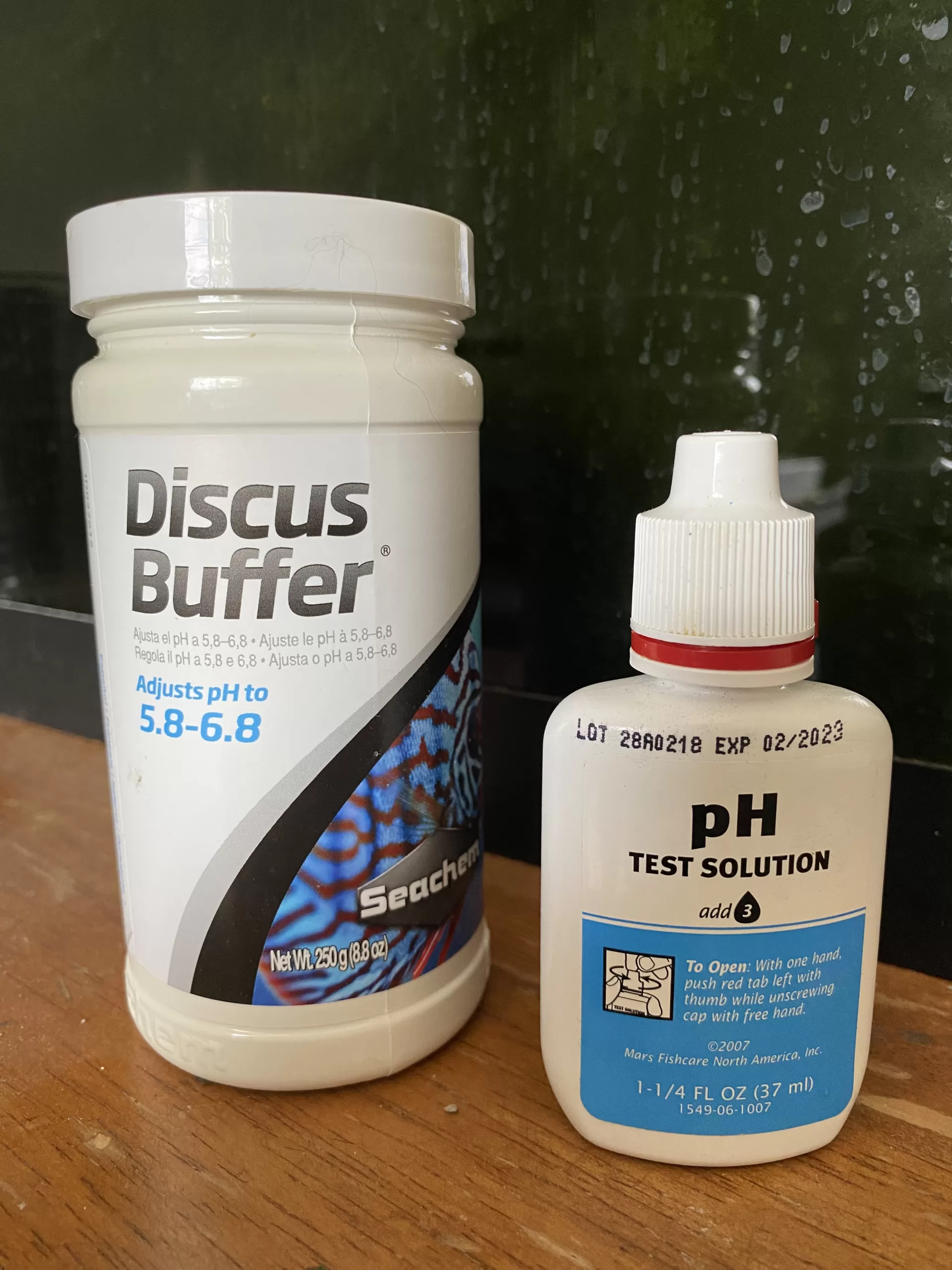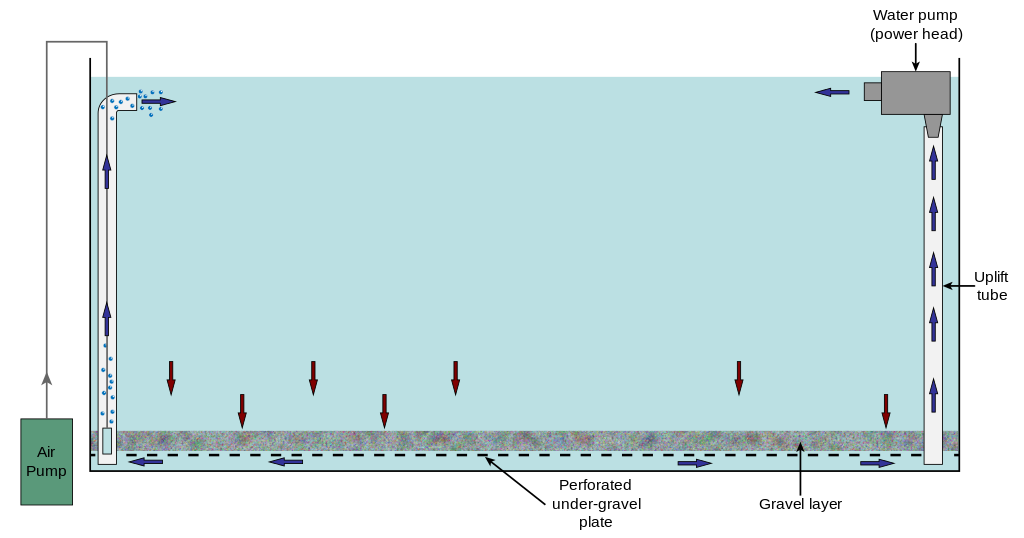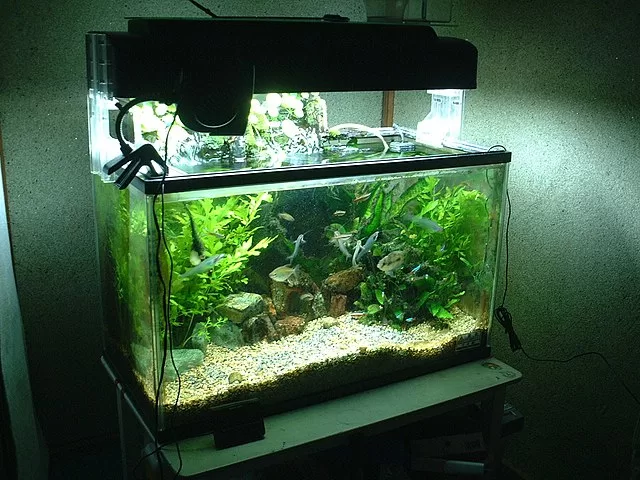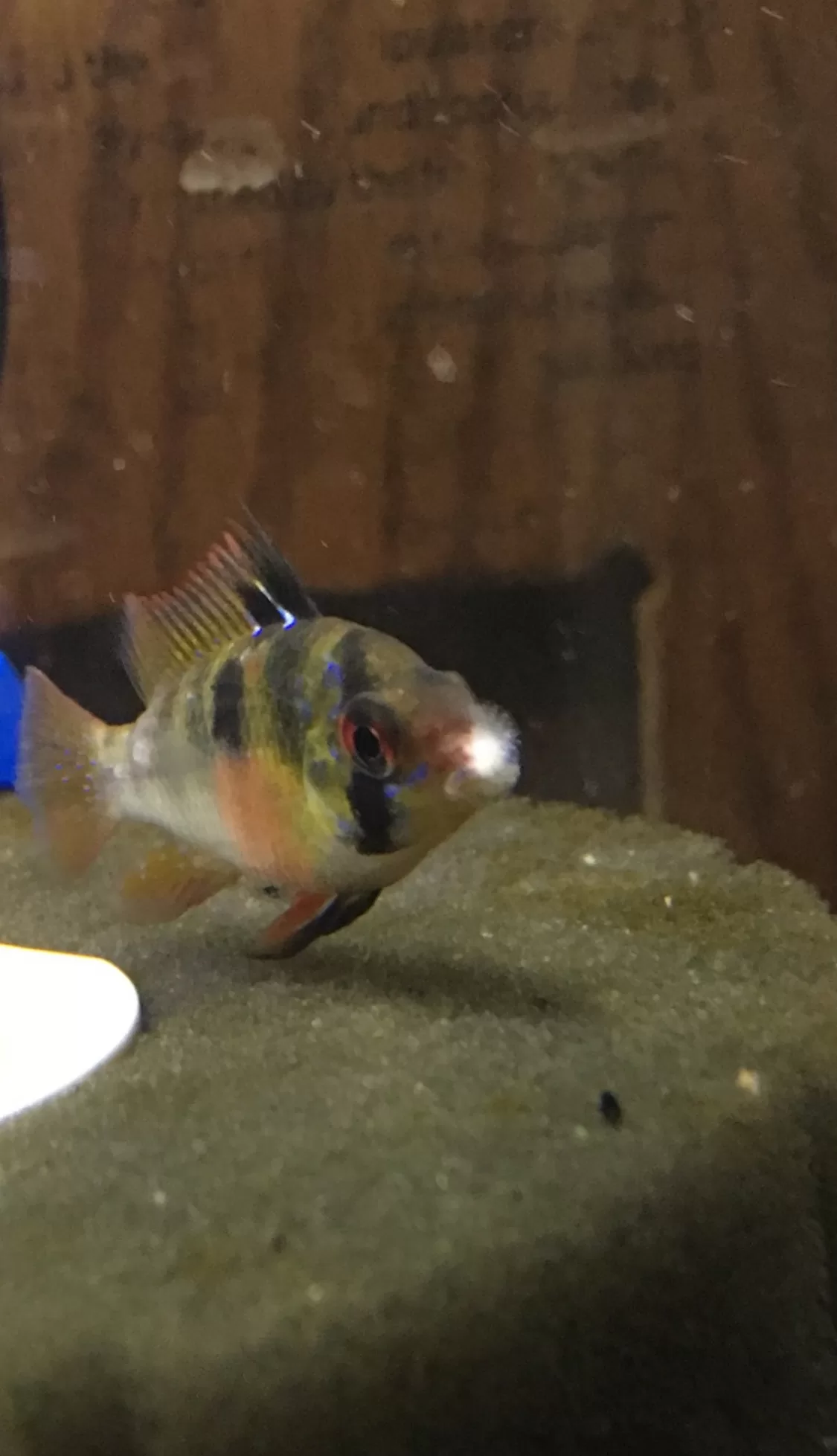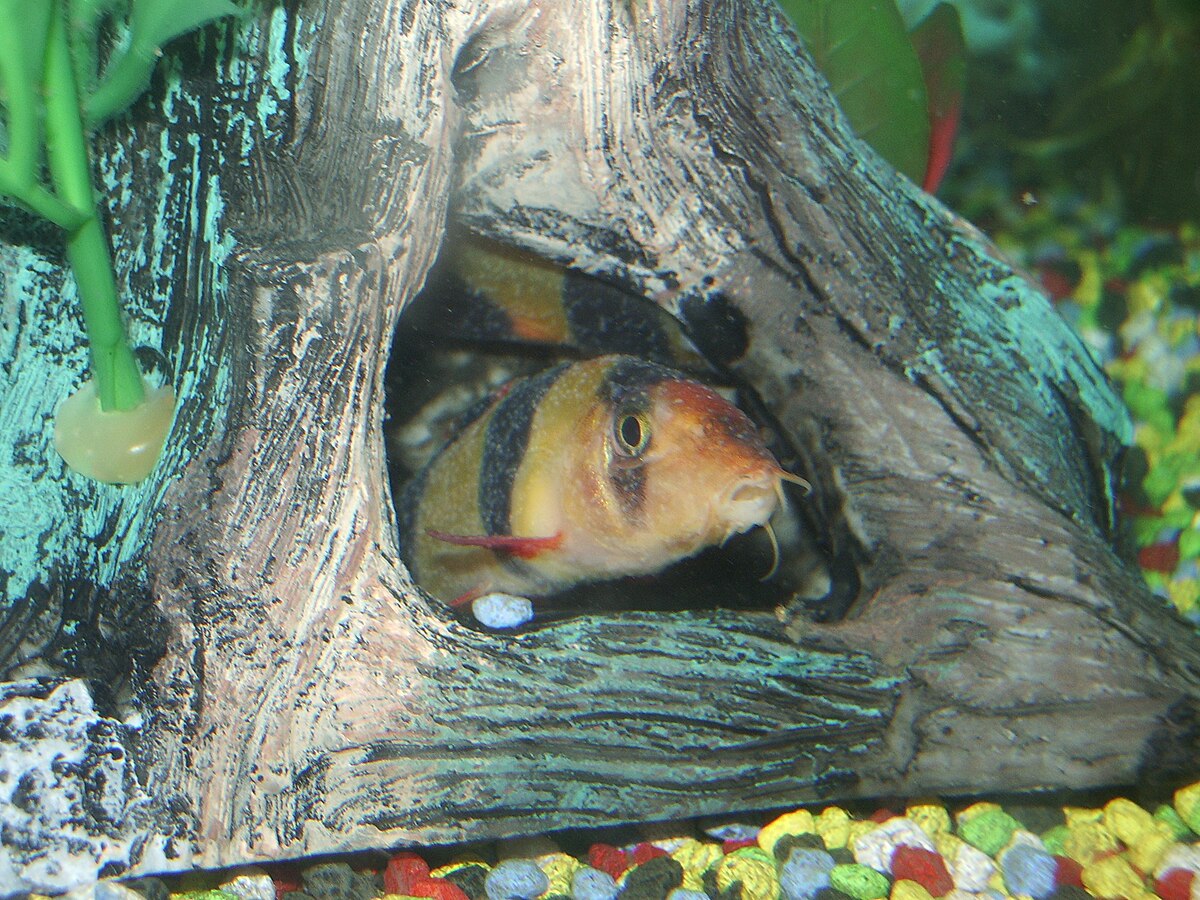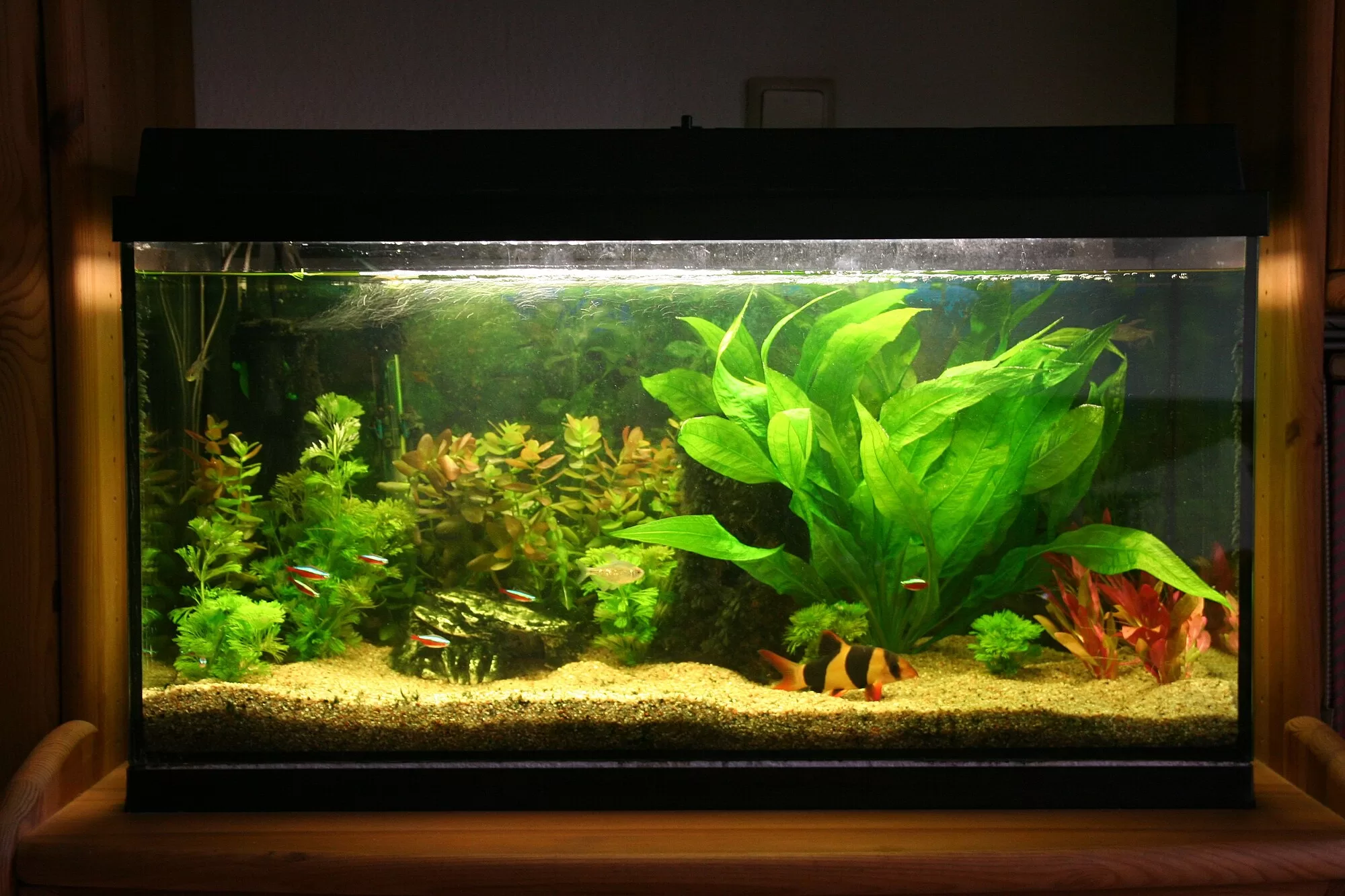The first successful aquarium I had was a 10-gallon tank that sat on my flimsy college apartment desk. I had just started working at a pet store that was heavily focused on fish. The rest is history, because fast forward a few years and my spare bedroom is a fish room.
In this article, we’re going to go over some choices for good beginner fish for a 10-gallon tank. Contrary to what you might be told on some hardcore forums or Facebook groups, there are many cool species you can keep in a 10-gallon tank.
10 Gallon Starter Tank Preparation
Step 1: Setting Up Your Tank
Setting up your tank is the first step to creating a home for your unique freshwater fish. Let’s look at the essentials:
- Substrate Choice: The substrate of your tank is more than just for looks. It actually plays a role in the ecosystem of a tank. For a 10-gallon tank with bottom-dwelling fish like Cories or Loaches, using finer sand is highly preferred.
- Filtration: A good filtration system is important for maintaining clean and healthy water. For a 10-gallon tank, a hang-on-back (HOB) filter or a sponge filter powered by an air pump is plenty. These filters provide both mechanical and biological filtration, which is important for water clarity and breaking down harmful substances in the water.
- Heating: Consistent water temperature is very important for the health of your fish. Most tropical freshwater fish prefer temperatures between 72°F and 78°F. Although some fish might fall outside of this recommended range. Using a reliable aquarium heater and a thermostat is highly recommended.
Step 2: Cycling Your Tank
Before introducing fish to your new aquarium, it’s imperative to cycle the tank. This process establishes beneficial bacteria that convert harmful ammonia from fish waste into nitrites and then into less harmful nitrates. This process usually takes about 6 weeks, and it’s absolutely essential for a healthy environment. Alternatively, some fish keepers have the option to instantly cycle their tanks.
Selecting Fish
When you’re picking fish for your 10-gallon tank, think about these three variables: how big they get, if they’re friendly, and how hardy they are. Here’s what you should know:
- Maximum Size: Your fish should be small enough to live comfortably in a 10-gallon tank, without outgrowing it. This means you should look for fish between 2-3 inches at the most.
- Temperament: Select peaceful fish! You want all your fish to get along and not be stressed.
- Care Level: Some fish are super easy to take care of, while others require more work. Starting with hardy, low-maintenance fish is ideal.
Good Starter Fish For a 10 Gallon Tank
Here are 10 unique fish that will do well in a 10-gallon tank:
- Betta Fish: They are known for their beautiful colors and elegant fins. They are also known as being aggressive, especially to other Bettas.
- Guppies: These are some of the hardiest fish. They are also very colorful and awesome for beginners. They’re social, so they do well in small groups.
- Neon Tetras: Their bright blue and red color makes them stand out in the tank. They’re peaceful and do best in small schools.
- Dwarf Gourami: These are mostly peaceful and brightly colored fish that add a centerpiece fish with a bit of personality to your tank.
- Cherry Shrimp: While these aren’t fish, Cherry Shrimp are great for adding some variety to your tank. They’re fun to watch and do a decent job at cleaning.
- Corydoras Catfish: These small bottom dwellers are peaceful and do a great job at keeping your substrate clean. They prefer to be in small groups.
- Harlequin Rasboras: Known for their unique colors, they do well in groups and are a great middle-level addition to your tank.
- Endler’s Livebearers: Similar to guppies in care level and behavior, these fish are super vibrant and active. They’re small and do well in groups.
- Zebra Danios: Hardy and energetic, Zebra Danios are great for beginners. They prefer to swim in small schools and add activity to your tank.
- Pygmy Corydoras: About half the size of other Corydoras, Pygmy Cories are perfect for a 10-gallon tank. They’re peaceful, and social, and help keep the bottom of the tank clean.
Species Overview
Betta Fish (Betta splendens)
Size: Up to 3 inches
Care Level: Easy
Temperament: Peaceful but territorial with other male Bettas
Diet: Carnivorous, high-protein foods
Habitat Needs: Warm water 78-82 ideally, plants for hiding
Unique Traits: They are known for their vibrant colors and long exotic fins. Betta fish can breathe air from the surface with their labyrinth organ. They make a good solo fish in a 10-gallon tank.
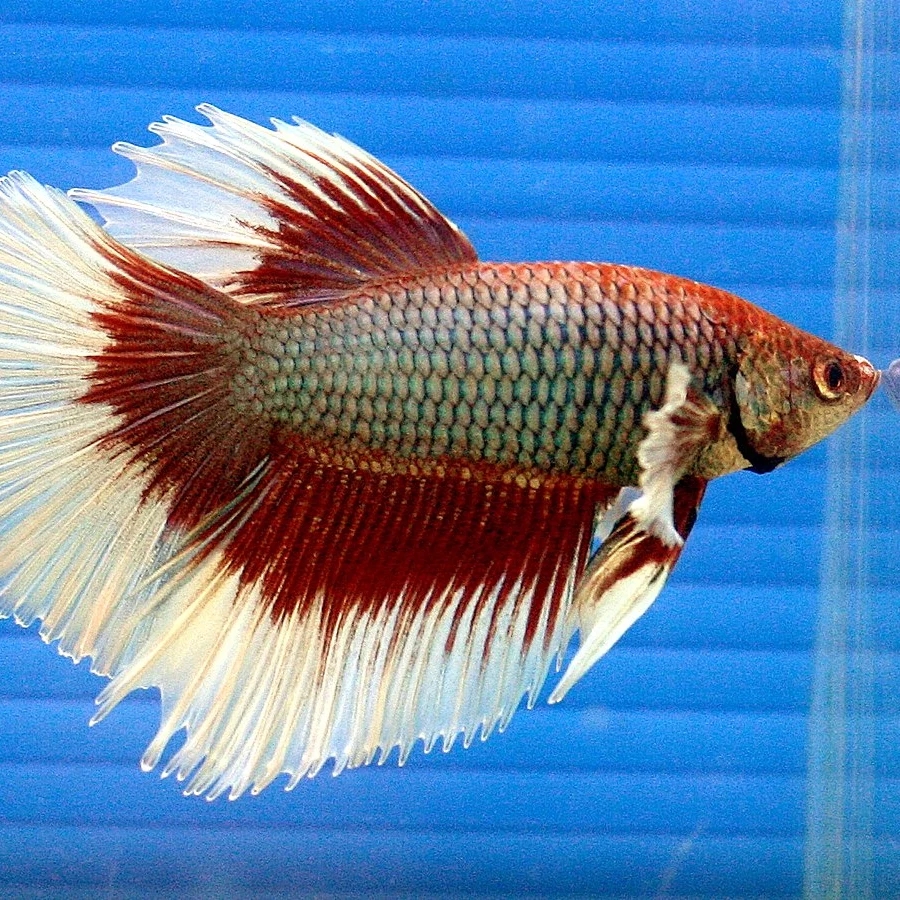
Guppies (Poecilia reticulata)
Size: 0.6-2.4 inches
Care Level: Easy
Temperament: Peaceful
Diet: Omnivorous, variety of foods
Habitat Needs: Warm water; enjoys plants and open swimming areas
Unique Traits: Highly adaptable and comes in many colors, the males are the ones with all the colors while the females are silver. Known for their active breeding, these are great starter fish for a 10 gallon tank.
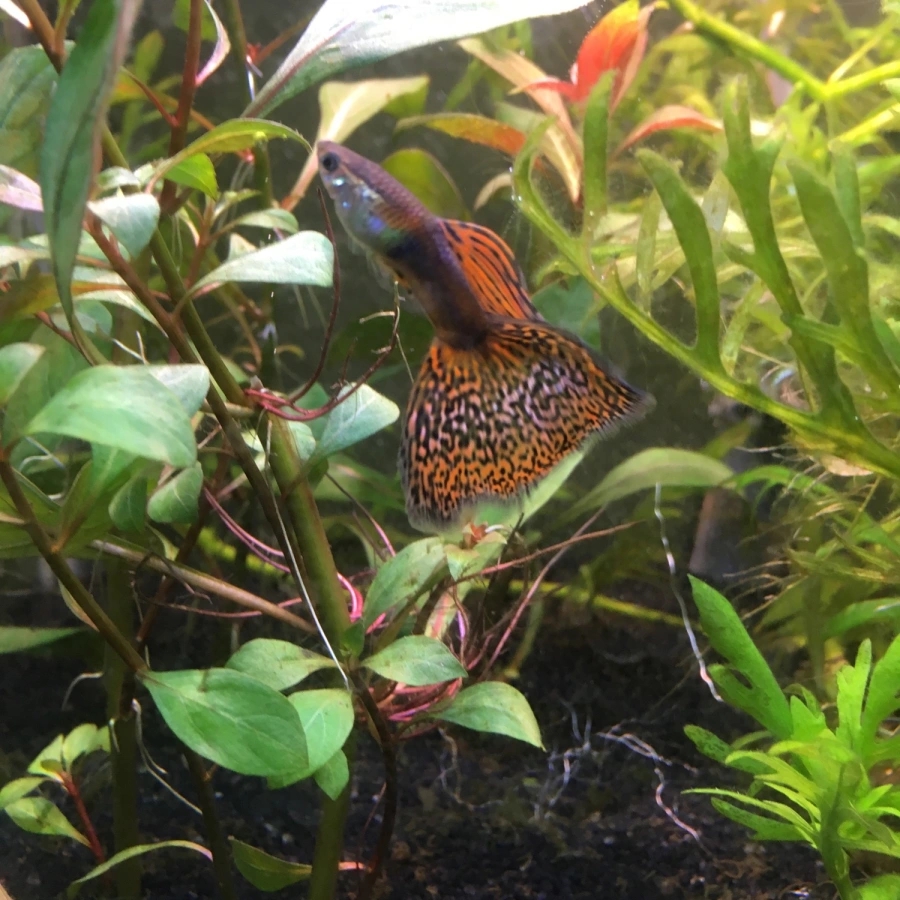
Neon Tetras (Paracheirodon innesi)
Size: Up to 1.5 inches
Care Level: Easy
Temperament: Peaceful, schooling fish
Diet: Omnivorous, prefers small, fine foods
Habitat Needs: Soft, slightly acidic water; dim lighting
Unique Traits: Their bright neon stripe makes them stand out, especially in groups. Do not mistake them for Cardinal Tetra! The Cardinals have a red band down their body versus the bottom half on Neon Tetras.
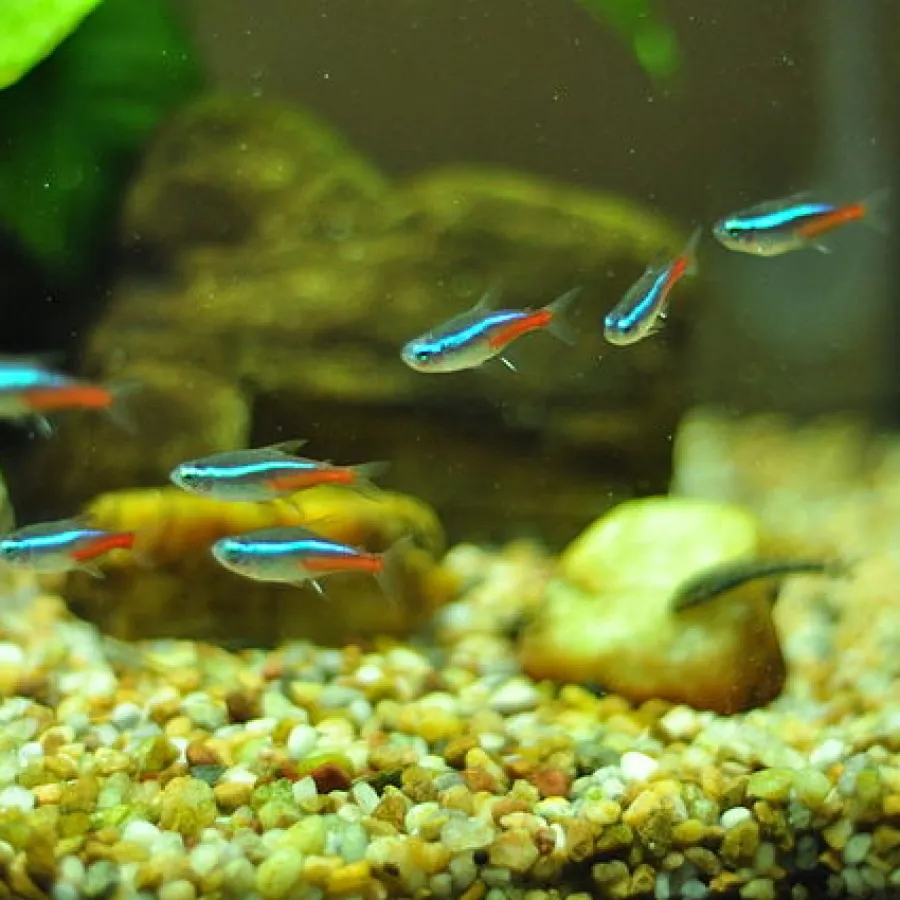
Dwarf Gourami (Trichogaster lalius)
Size: Up to 3.5 inches
Care Level: Moderate
Temperament: Peaceful
Diet: Omnivorous, accepts most foods
Habitat Needs: Warm water with plenty of vegetation
Unique Traits: Males display vibrant colors like orange and blue, and might “sing” to attract females or establish territory.
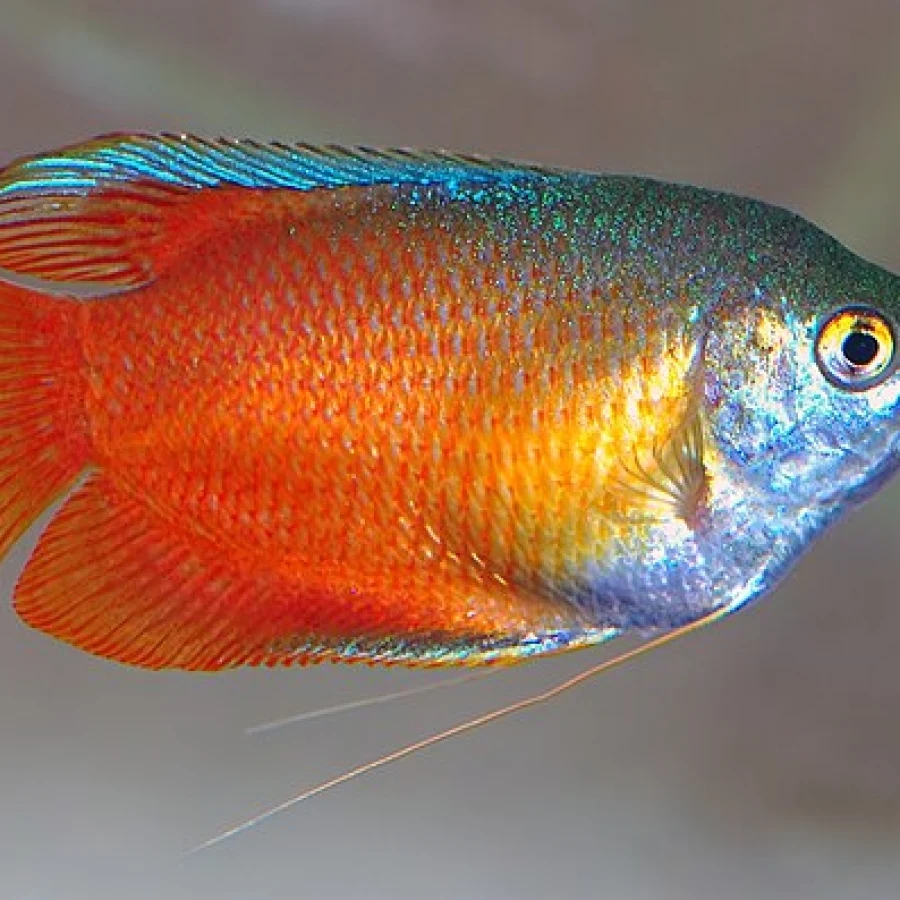
(3)
Cherry Shrimp (Neocaridina davidi)
Size: Up to 1.5 inches
Care Level: Easy
Temperament: Peaceful
Diet: Omnivorous, great for algae control
Habitat Needs: Prefers tanks with plenty of hiding spots and live plants
Unique Traits: Their bright red color adds nice color, and they’re beneficial for cleaning the tank.
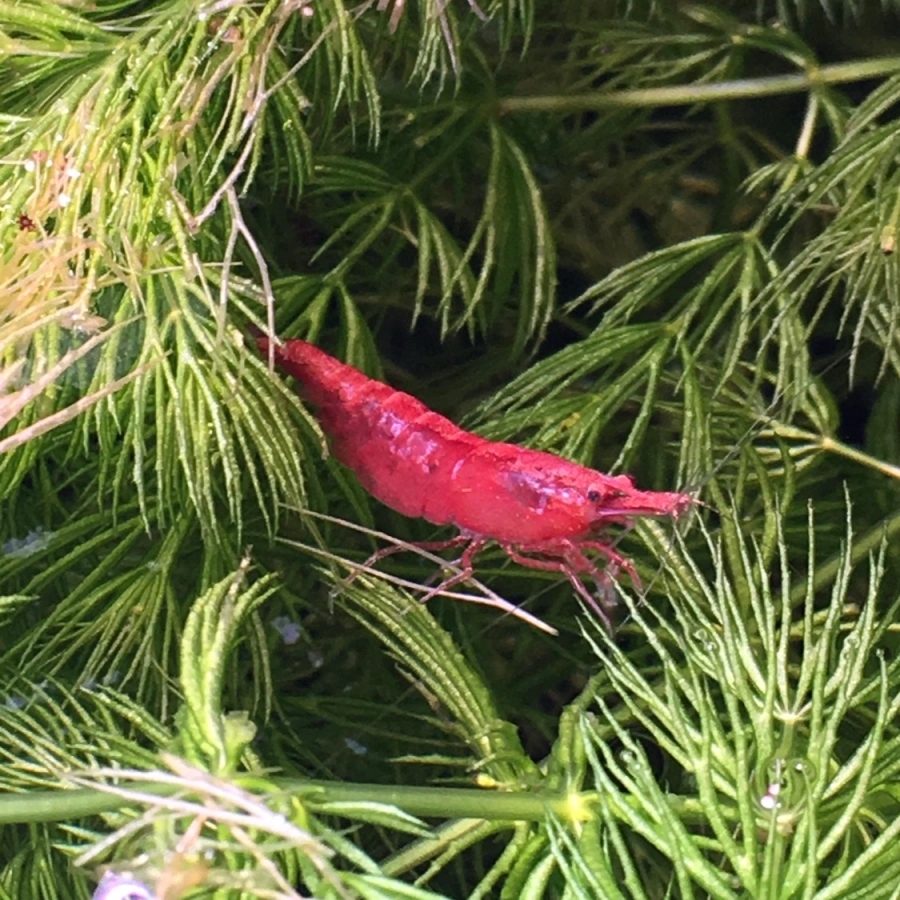
Corydoras Catfish (Corydoras spp.)
Size: 1-2.5 inches, depending on species
Care Level: Easy
Temperament: Peaceful, social
Diet: Omnivorous, bottom feeders
Habitat Needs: Soft substrate to protect their barbels; enjoys hiding spots
Unique Traits: They have an armored scale appearance and do what is called the “Cory shuffle” in groups.
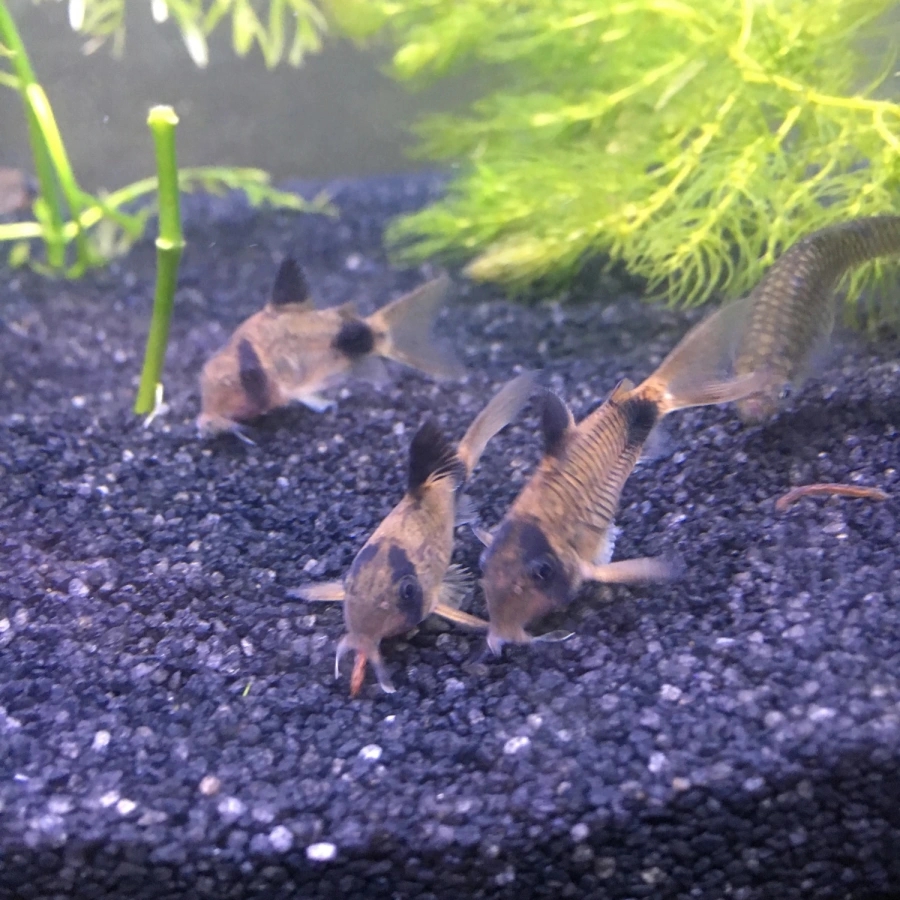
Harlequin Rasboras (Trigonostigma heteromorpha)
Size: Up to 2 inches
Care Level: Easy
Temperament: Peaceful, schooling fish
Diet: Omnivorous
Habitat Needs: Soft, acidic to neutral water. They like a dark substrate and plants
Unique Traits: Recognized by their black “harlequin” patch and orange body. These are a great choice as a small schooling fish for a 10 gallon tank.
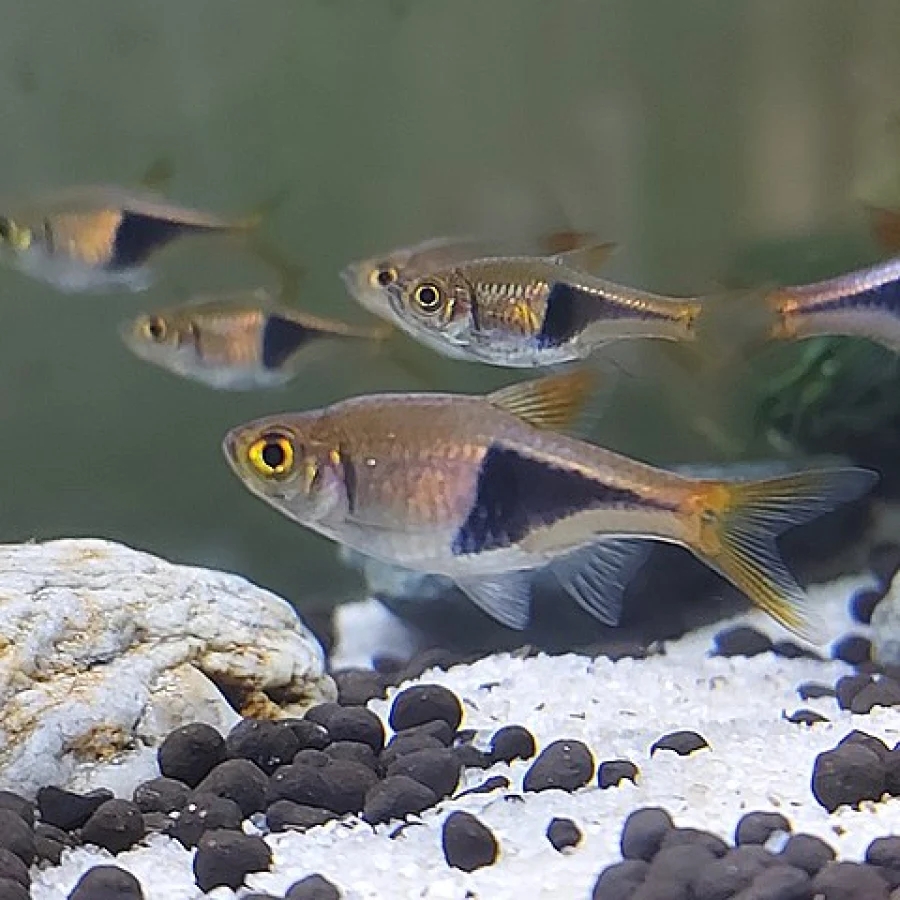
(4)
Endler’s Livebearers (Poecilia wingei)
Size: Up to 1.8 inches
Care Level: Easy
Temperament: Peaceful
Diet: Omnivorous
Habitat Needs: Prefers planted tanks with open swimming areas
Unique Traits: Known for their vibrant colors and patterns. Males are particularly colorful, which makes them a popular choice over the females.
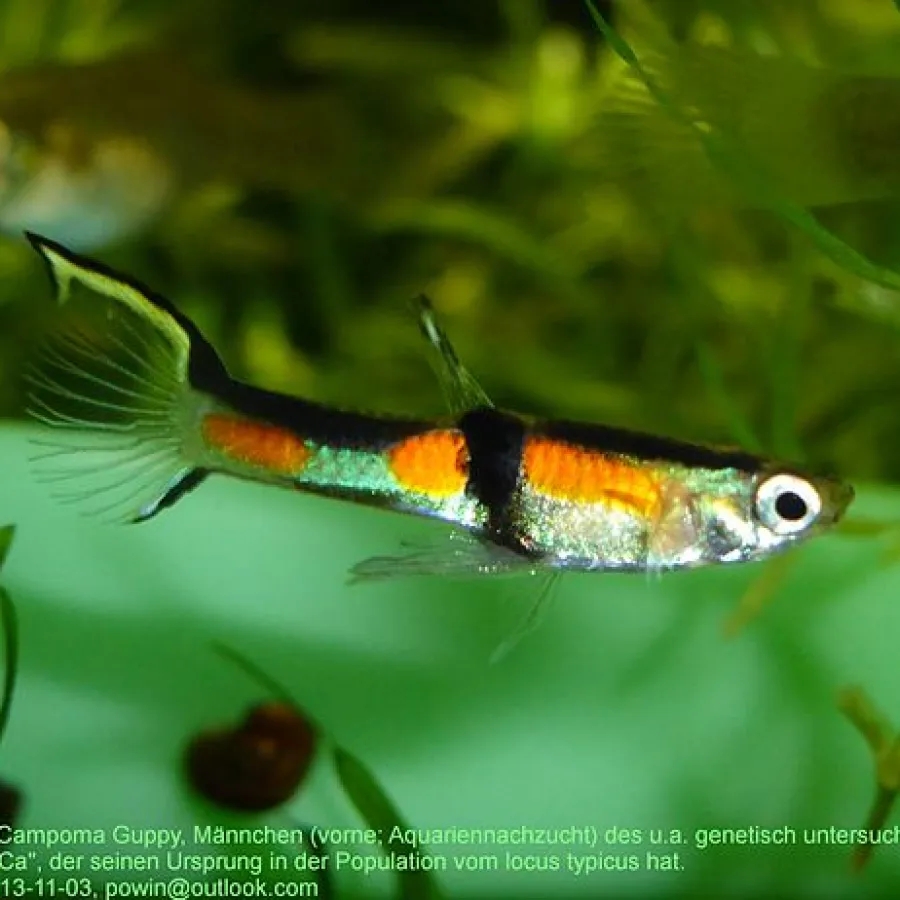
(5)
Zebra Danios (Danio rerio)
Size: Up to 2.5 inches
Care Level: Easy
Temperament: Active, peaceful
Diet: Omnivorous
Habitat Needs: Prefers a tank with decent swimming space and some vegetation
Unique Traits: Their distinctive horizontal zebra stripes and high activity are what make them popular
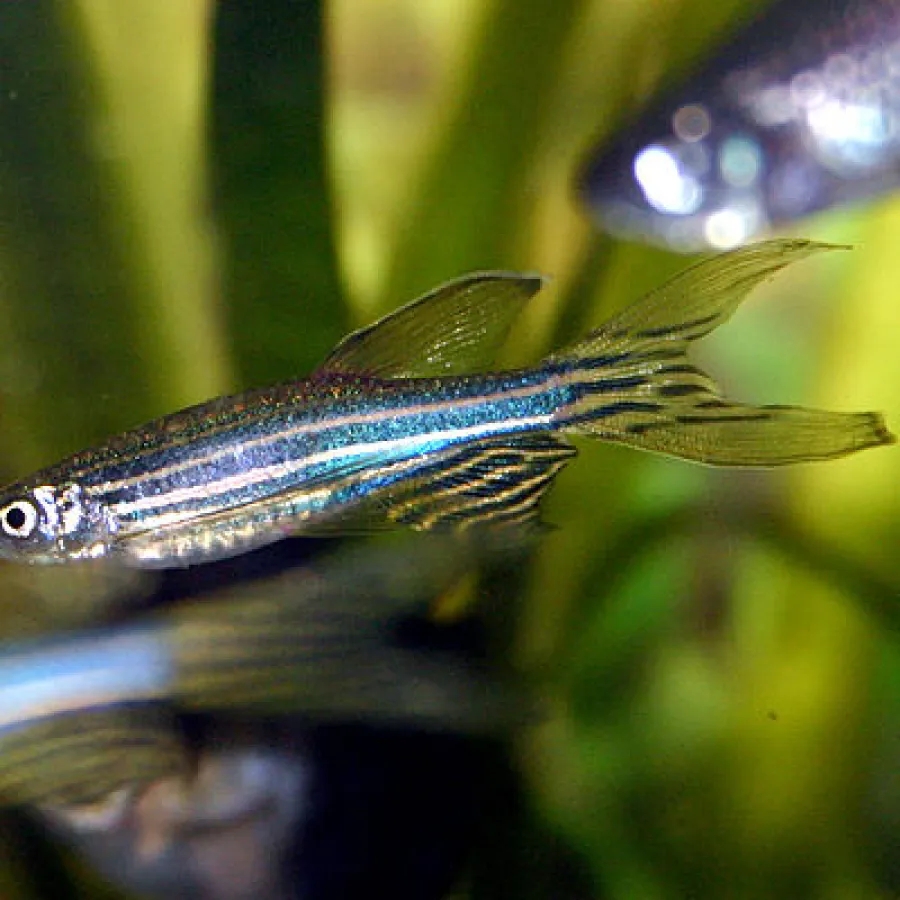
(6)
Pygmy Corydoras (Corydoras pygmaeus)
Size: Up to 1 inch
Care Level: Easy
Temperament: Peaceful, social
Diet: Omnivorous, bottom feeder
Habitat Needs: Soft substrate and places to hide
Unique Traits: Their small size and schooling behavior make them a perfect addition to small tanks. They are one of the best bottom feeders for a 10-gallon tank.
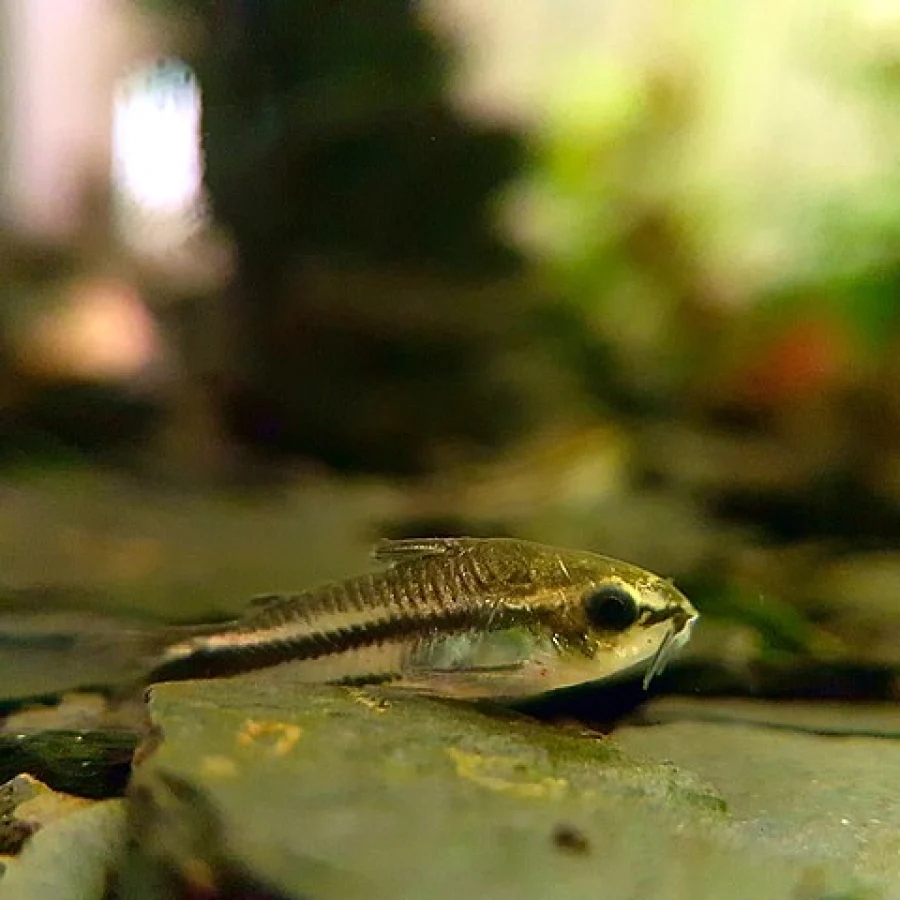
(7)
Stocking Your 10-Gallon
While all of these choices above can be appropriate for a 10 gallon aquarium, not all of them go together.
The Betta fish is the one that will likely give you the most issues. I would avoid putting the Betta in a tank with anything other than Corydoras, otherwise, you will probably have a lot of aggression. So a good setup would be a Betta and 6-8 Pygmy Cories, or instead of Pygmys you can do 4-6 Panda Cories.
Another option would be a school of one of the schooling fish listed above like Danios or Rasbora, a Gourami, and a small school of Pygmy Cores. This will give you one centerpiece fish, a mid-level schooling fish, and a bottom-level schooling fish.
There are a few more combinations you can do. The main thing is to not put the Betta with the wrong fish, and avoid overstocking the 10 gallon.
FAQ
How long should a 10 gallon tank sit before adding fish?
If you’re asking this question, you need to understand the aquarium nitrogen cycle, because a tank sitting empty does not do anything.
How many fish should you have in my 10 gallon tank?
There is no one-size-fits-all answer to this, it depends on what type of fish you have. Generally, you should have no more than 10 total.
Wrapping Up
After reading this article, you should now have a decent list of species to stock in your 10 gallon starter tank. Apart from the Betta, you have several different combination choices, so feel free to personalize your stock. In general, one center-piece fish, one school of mid-level swimming fish, and one school of bottom-dwelling fish is what you should aim for. Good luck with your new tank!
Citations:
- (Lerdsuwa, CC BY-SA 3.0, via Wikimedia Commons)
- (Tan Meng Yoe at English Wikipedia, CC BY 4.0, via Wikimedia Commons)
- (André Karwath aka Aka, CC BY-SA 2.5, via Wikimedia Commons)
- (Roel Balingit, CC BY-SA 4.0, via Wikimedia Commons)
- (Emilio17, CC BY-SA 3.0, via Wikimedia Commons)
- (Marrabbio2, Public domain, via Wikimedia Commons)
- (AquaTuer, CC BY-SA 4.0, via Wikimedia Commons)



